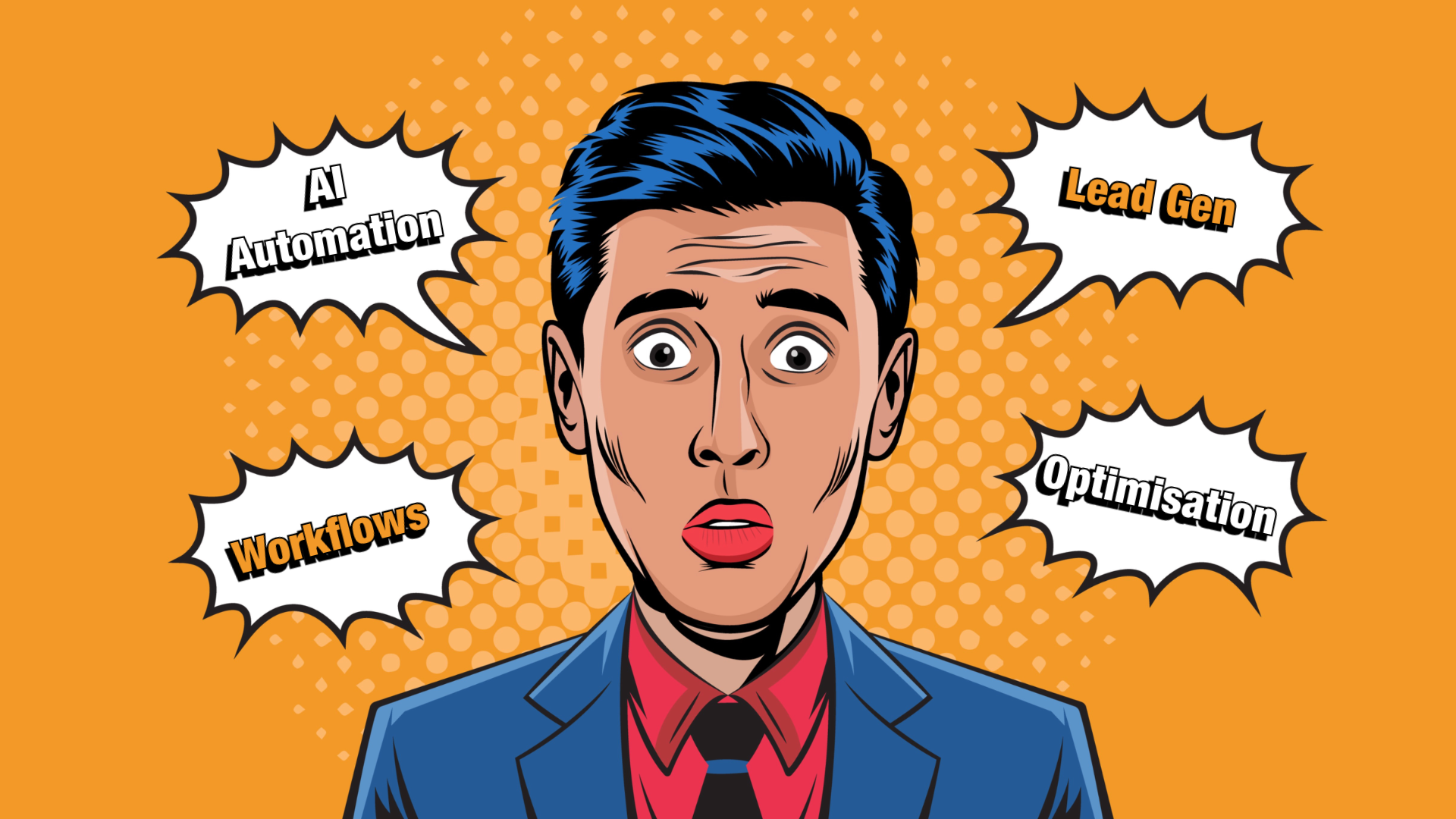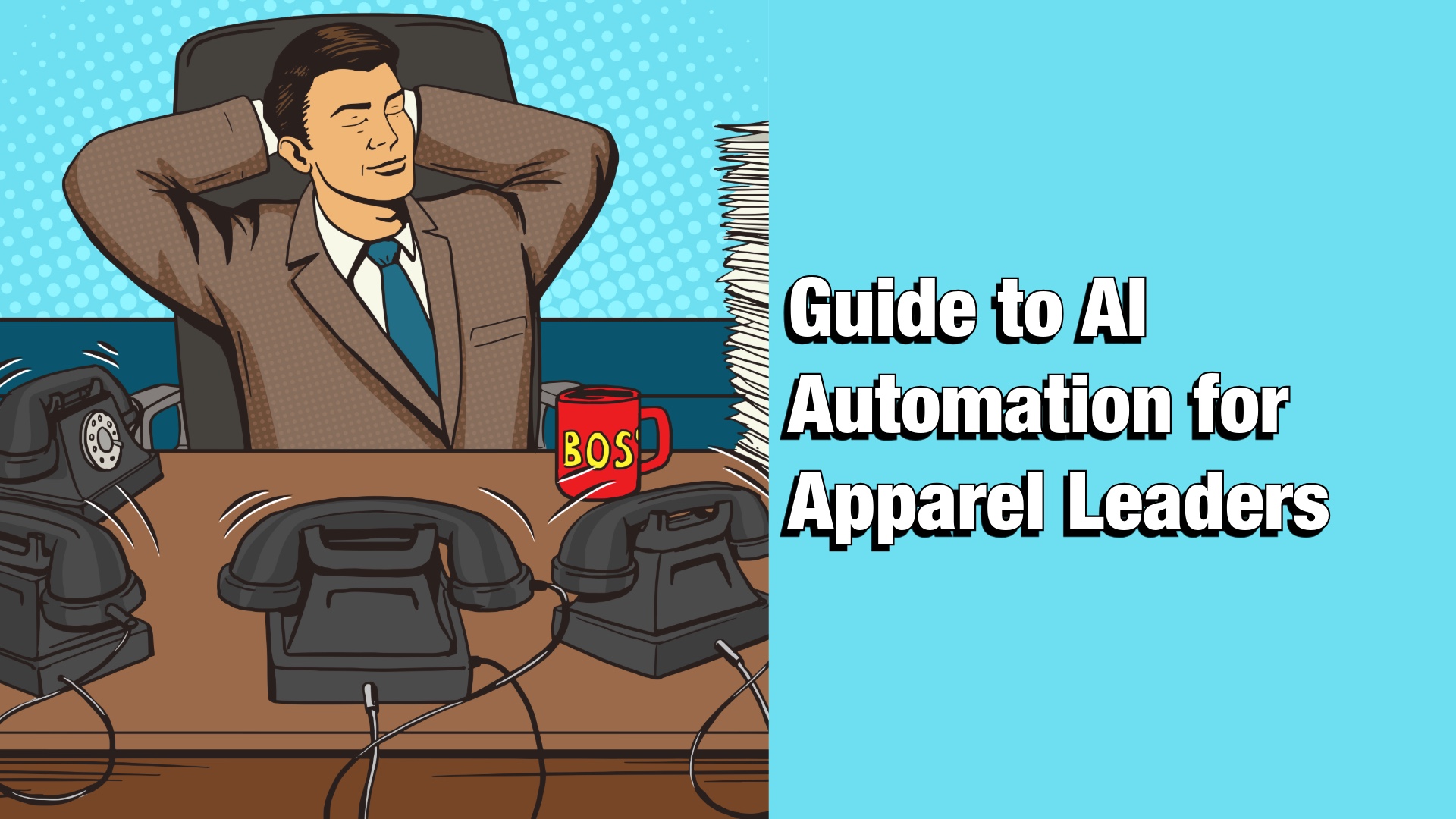Transforming Apparel Operations with AI Automation

For apparel manufacturers, profit margins are being crushed by rising production costs and intense downward price pressure. This guide provides a blueprint for escaping this squeeze by transforming your factory's core operations. You will learn how to move beyond outdated, manual processes by implementing practical, high-ROI AI-powered automation to solve your most critical bottlenecks.
Balancing Cost, Quality, and Speed in Modern Apparel Manufacturing
The factory floor is the heart of any apparel manufacturing business, but for many, it has become the epicenter of immense financial and logistical pressure. Leaders are forced to walk an operational tightrope, constantly balancing the conflicting demands of cost reduction, quality assurance, and production speed.
The Margin Squeeze
Apparel manufacturers are facing a severe "double whammy" that is systematically eroding profitability. On one side, the costs of production are rising relentlessly due to global inflation, higher prices for raw materials, increased labor wages, and peaking transportation expenses. Cotton prices, for example, which can constitute up to 50% of a manufacturer's raw material cost, saw a staggering 30% increase in the first half of 2022 alone. On the other side, intense competition and the economic slowdown have empowered buyers to exert significant downward pressure on prices. This combination of rising input costs and reduced revenue per unit creates a punishing margin squeeze that leaves little room for error or investment.
The Labor Challenge
The apparel manufacturing sector is grappling with a growing shortage of skilled labor in key production regions, compounded by rising labor costs. An aging workforce and competition from other industries are making it increasingly difficult to attract and retain the talent needed to operate sewing lines and other critical machinery. This labor scarcity directly impacts production capacity, compromises quality, and further drives up operational expenses, adding another layer of complexity to the operational challenge.
The Production Planning Puzzle
Effective production planning and scheduling are notoriously complex in the apparel industry, which is characterized by high product variety, seasonal demand, and the pressure of fast-fashion cycles. Many manufacturers still rely on manual or semi-automated planning processes that are slow, rigid, and unable to adapt to real-time events. Inaccurate demand forecasts lead to poor resource allocation, while unforeseen bottlenecks on the factory floor—such as machine downtime or material delays—can cause a cascade of disruptions, resulting in missed deadlines, expensive expedited shipping, and strained client relationships.
The Automation Solution Framework for Operational Excellence
To escape the operational tightrope, manufacturers must move beyond isolated systems and manual processes. The solution is to create an integrated, intelligent, and automated factory environment. n8n provides the framework to achieve this, acting as the central nervous system for the entire production facility.
Connecting the Disconnected Factory
A primary source of inefficiency is the fragmented technology landscape found in most factories. Critical data is often siloed in disparate systems—a legacy Enterprise Resource Planning (ERP) system, a modern Product Lifecycle Management (PLM) platform, a Manufacturing Execution System (MES), and a growing network of Internet of Things (IoT) sensors—that do not communicate with each other. n8n excels at breaking down these silos. With over 1,000 pre-built integrations and a powerful HTTP Request node that can connect to any application with an API, n8n can seamlessly integrate systems like SAP, Oracle NetSuite, Infor M3, and various IoT protocols. This creates a unified data flow, providing a single source of truth for all operational activities.
From Reactive to Proactive Operations
The true power of this integrated framework is its ability to transform operations from a reactive, "firefighting" mode to a proactive, predictive model. This shift is fundamental: it allows manufacturers to anticipate and mitigate problems, optimizing uptime, quality, and throughput.

Workflow Blueprints for a Smarter Factory Floor
The following blueprints illustrate how n8n and AI can be applied to solve specific, high-impact operational challenges. These are not theoretical concepts but practical, deployable solutions that deliver measurable ROI.
Workflow 1: Automated Order-to-Production Pipeline
- Challenge: The process of receiving orders from multiple channels (e-commerce stores, B2B portals, traditional EDI) and manually entering them into the ERP system is a major bottleneck. This slow, labor-intensive task is prone to data entry errors that can lead to incorrect production runs and shipping mistakes, delaying the entire manufacturing process from the very first step.
- Solution Blueprint:
- Trigger (Omni-channel Order Capture): The process begins when multiple order sheets are put into a dedicated folder. A Trigger captures this update, and receives the orders. For legacy partners, an IMAP or Google Drive Trigger can watch for incoming order files (like EDI or CSVs).
- Data Standardisation: Each order, regardless of its source, is passed through a Code Node. This node acts as a universal translator, reading and converting each order into a single, standardized JSON format with consistent field names such as (customer_id, sku, quantity, due_date). This ensures all downstream logic works with clean, predictable data.
- Order Consolidation & Material Availability Check: The standardized orders are appended as new rows to a central "staging area," such as a dedicated Google Sheets tab or an Airtable base named Pending Production Queue. This creates a buffer of all incoming demand.
- Group & Aggregate: The next Node then performs the critical consolidation logic. It groups the pending orders by common attributes (e.g., all orders for SKU: TS-BLK-MED) and calculates the total consolidated demand (e.g., "Total demand for TS-BLK-MED is 475 unit")
- Material Check (The Smart ERP Interaction): The workflow now takes this consolidated demand and queries your ERP or inventory database using a MySQL or HTTP Request node. It is not creating a redundant order; it is asking a strategic question: "For the 475 units of TS-BLK-MED, do we have the required 500 meters of black cotton fabric and 475 branded labels in stock
- Production Batch Generation & Scheduling Handoff: Conditional Branching: An IF Node checks the result of the material query.
- Path A (Materials Available): If inventory is sufficient, the workflow proceeds. It uses the ERP node (e.g., ERPNext) or an HTTP Request node to generate a single, consolidated Production Order for the full batch of 475 units. It then updates the status of the original (multi) individual orders in the Pending Production Queue to "Batched for Production."
- Path B (Materials Unavailable): If inventory is insufficient, the workflow triggers an alert. A Slack or Microsoft Teams node sends a notification to the procurement and merchandising teams: "URGENT: Material Shortage for Production Batch #PB-101. Requires 500m of black cotton; only 210m available. 475 units are on hold.
- Team Notification: For successful batches, a final Slack notification is sent to the production planning team: "New Production Batch #PB-101 (475 units of TS-BLK-MED) is created and material-verified. Ready for line scheduling." This message includes a direct link to the consolidated production order in the ERP.
Workflow 3: AI-Powered Production Scheduling Optimization
- Challenge: Manual production scheduling is a static, time-consuming process that struggles to keep pace with the dynamic reality of the factory floor. When unexpected events occur—a high-priority rush order arrives, a key material shipment is delayed, or a machine breaks down—the entire schedule must be painstakingly reworked, leading to inefficiencies and missed deadlines.13
- Solution Blueprint:
- Data Aggregation: The workflow runs on a Schedule Trigger, for instance, every night, to prepare the next day's schedule.38 It uses a series of nodes (ERPNext, HTTP Request) to pull together all necessary data points into a single, unified view: a list of all open production orders from the ERP, real-time machine status and availability from the MES, confirmed arrival dates for raw materials from the supply chain system, and employee shift schedules.29
- AI-Powered Prioritization: This consolidated dataset is fed into an AI Agent node or a Code Node running a Python script.18 The AI is given the persona of an expert production planner and a clear set of optimization rules via its prompt, such as: "Given the following production orders, machine availability, and material constraints, generate an optimal production schedule that prioritizes orders based on customer tier first, then by delivery deadline. The schedule should aim to minimize machine changeover times and maximize throughput.".34
- Schedule Generation & Distribution: The AI model outputs a detailed, optimized schedule in a structured format like JSON. The n8n workflow then takes this output and executes the plan. It uses API calls to update the official schedule in the ERP or MES and then distributes tailored versions of the daily plan to relevant stakeholders—for example, sending a summary to plant managers via Gmail and a detailed task list to a shared Notion page for line supervisors.35
- Dynamic Re-Scheduling: Crucially, this workflow can also be event-driven. A Webhook from the MES signaling a machine failure can trigger the workflow to run instantly. The AI re-analyzes the situation with the new constraint and generates a revised, optimized schedule within minutes, allowing the team to adapt immediately to the disruption.
- Impact: This solution replaces a rigid, manual process with a dynamic, intelligent scheduling engine. It significantly improves on-time delivery rates, increases machine and labor utilization, and provides the agility needed to respond effectively to the unpredictability of modern manufacturing.41
The Operational Paradox of Modern Apparel Manufacturing
The apparel industry is caught in a difficult position. The market, heavily influenced by the fast-fashion model, demands unprecedented levels of speed, flexibility, and trend-responsiveness.5 Achieving this requires significant investment in advanced, intelligent technologies like AI, IoT, and robotics.1 These technologies are no longer a luxury but a necessity for staying competitive. Yet, the very same market forces that create this demand—intense price competition and volatile consumer spending—simultaneously compress manufacturers' profit margins, making them deeply risk-averse to the large capital expenditures traditionally associated with such technological upgrades.
This creates a critical impasse: the need to innovate is at an all-time high, but the financial capacity to do so is at a low. This is where a platform like n8n provides a unique and powerful solution. Unlike monolithic, multi-million dollar software overhauls, n8n enables an incremental and high-ROI approach to automation. It is not a "rip and replace" solution; it is a powerful integration and automation layer that enhances the value of existing systems.19 A manufacturer can begin by implementing a single, targeted workflow—such as the real-time quality control alerts—at a very low cost. By proving the tangible ROI of that one workflow (e.g., a 15% reduction in fabric waste), they can build a business case for further investment, scaling their automation initiatives one high-impact use case at a time. This de-risks the innovation process and provides a practical, financially viable pathway to building the smart factory of the future.
Related Guides

Top 5 Apparel Manufacturing Processes Ripe for AI Automation in 2025: Your Path to Efficiency and Profitability

From Cost to Competitive Edge: A 7-Step Guide to AI Automation for Apparel Leaders



